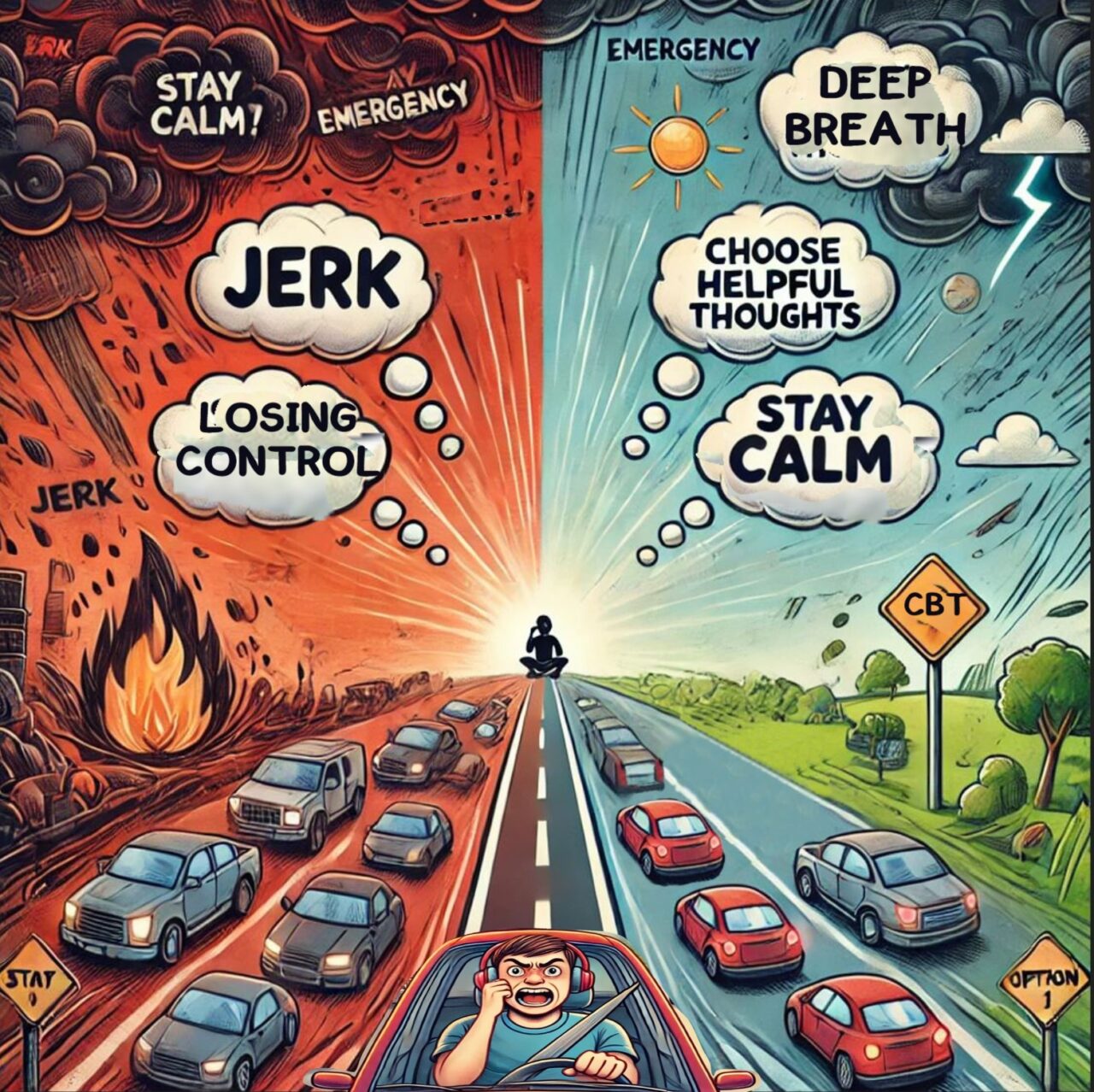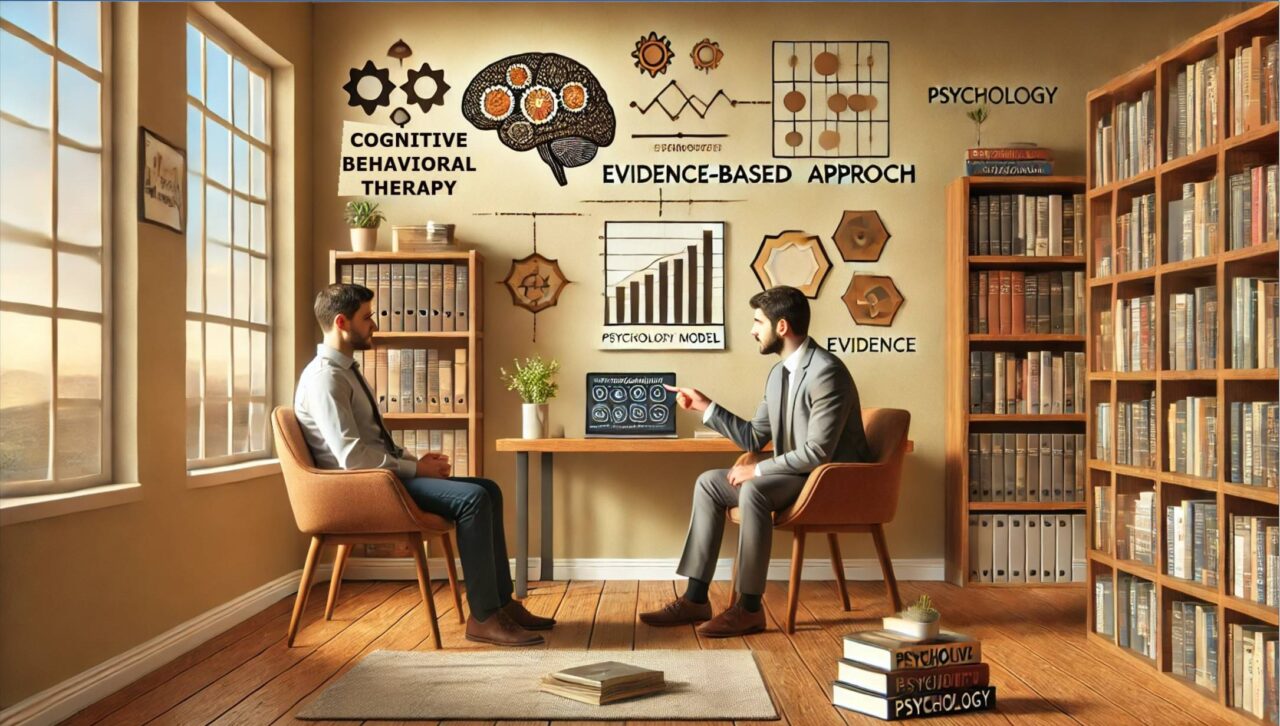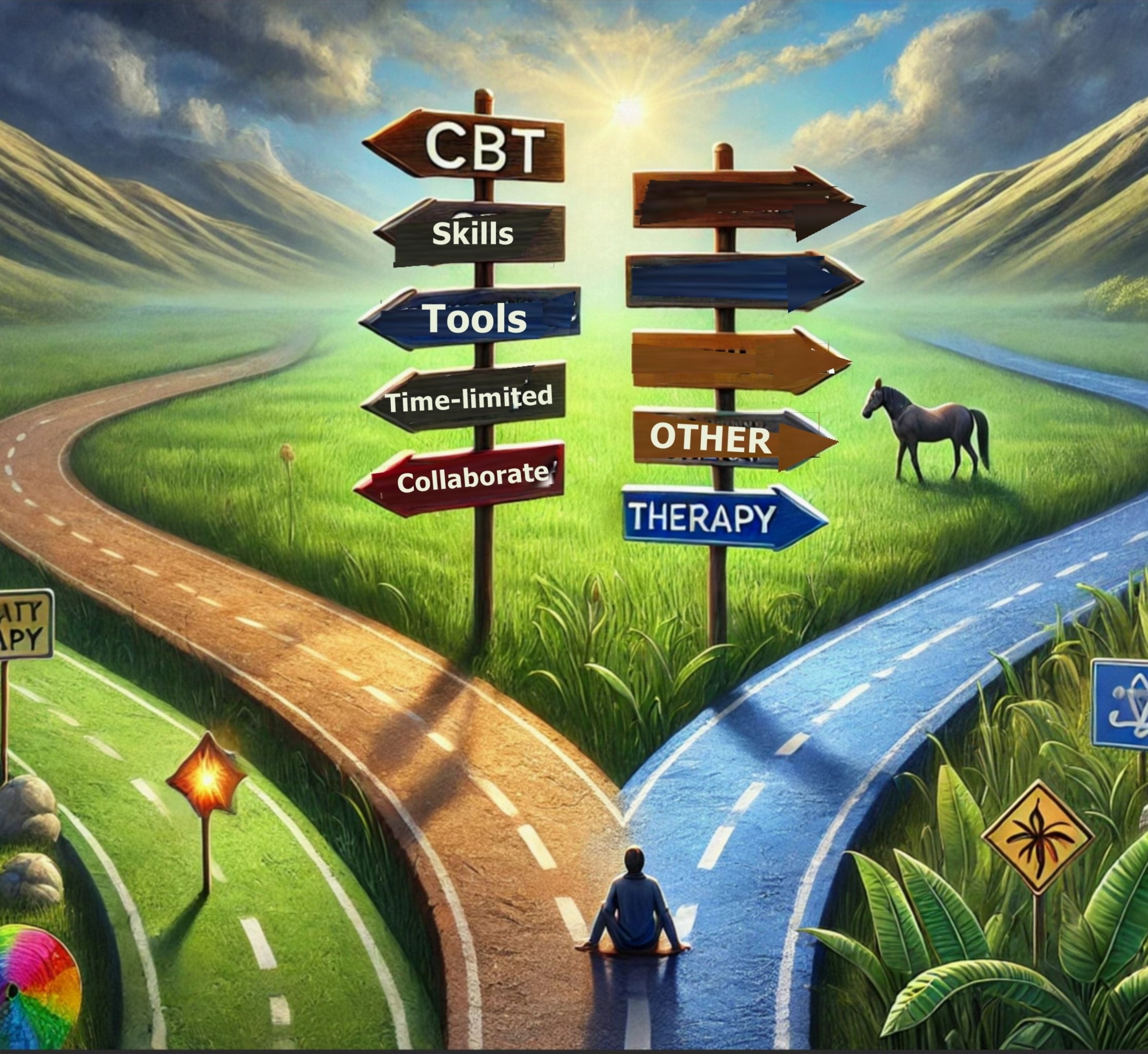“You can’t stop the waves, but you can learn to surf.”. – Jon Kabat-Zinn
CBT stands for Cognitive Behavioral Therapy. In CBT, the therapist helps you break down your complex and overwhelming issues into smaller, more manageable tasks. The therapist helps you understand the non-obvious connections between your thoughts, feelings, and behaviors and then the therapist works collaboratively with you to figure out the best ways to make changes so that you can increase your mental health and happiness.
CBT is based on the idea that your thoughts influence your feelings, which then affect how you behave. It’s also based on the idea that the client has an important perspective that needs to be incorporated into therapy.


CBT is more goal-oriented compared to many other types of therapy: CBT works to identify specific issues you are facing and then the therapist collaboratively works with the client to develop strategies to address the issues.
Although CBT does take into consideration how you learned different ways of thinking from the past, it doesn’t focus on your childhood the way some other therapy styles do. The focus is more on the present. For example: In CBT, we aren’t as concerned with why the knife got stuck in your leg, we are focused on how to get it out and how to heal.


We help clients to identify thoughts that are untrue and/or unhelpful and figure out alternative thoughts that would be just as true and also more helpful. In CBT, we don’t believe that the client can be tricked into believing something; It’s more about figuring out what thoughts make more sense to the client and would lead the client to the path they are hoping to be going down in life.
For example: If I am on the freeway and someone cuts me off, I have many choices in how I will think, feel and react.
Option 1: I might think the person who cut me off is an awful person who thinks they are better than everyone. Because of that thought, I get angry and frustrated. That feeling then leads me to tailgate the person or flip them off. Often, it doesn’t end with that. I need to then go and tell the next 3 people about the jerk on the freeway.
Option 2: I might think the person who cut me off has an emergency, such as a loved one in the hospital that they must get to. I might consider that they could be a jerk, but I don’t want to waste my day thinking about a jerk. I feel compassion (or neutral) and start singing to the music again or continue my phone call I was on with a friend.
CBT concept: I will evaluate that option 1 may be true (I have no idea), but it isn’t helpful, so I go to option 2. Option 2 is “just as true” as option 1, but it is more helpful, so I will stick with option 2 because it makes my day better.
CBT was the first form of therapy that was tested in research and shown to be successful in helping a variety of issues, such as helping with anxiety, depression, general stress, life choices, and life changes, to name a few. CBT is still demonstrating in research to be an effective therapy style.

Since CBT is a collaborative process between the client and the therapist, the therapist will teach you tools and skills so that you can make necessary changes in your life to obtain your goals. Once you have the tools and skills, you can apply them to a wide variety of issues in life.
CBT is usually a shorter therapy style compared to most other types of therapy. It’s not intended to go on forever. It’s also structured so that the sessions have a clear agenda, and we often use exercises inside of session to practice skills with clients & use exercises outside of the session to have clients practice skills in real-life situations.

I have mentioned in past bullet points that CBT is collaborative, but also chose to have “collaborative” as a separate bullet point because CBT is truly about working together as a team. The therapist’s goal is helping the client reach the client’s goals in a way the client feels comfortable with. The client’s active participation, insights and efforts outside of session are crucial to CBT.
The ultimate goal of CBT is for the client to feel confident in their ability to take charge of their life so they can make changes that are healthy for them.
The first step in therapy is building a trusting and confidential relationship between you and your therapist. This is crucial because a strong therapeutic alliance can significantly impact the effectiveness (and speed) of the therapy.
If you feel that the therapist is providing you a safe and non-judgmental place to share your thoughts and experiences, you will be more likely to achieve your goals.
At Long Beach Therapy, our goal is to provide a safe and non-judgmental place where we can help our client’s reach their full potential by processing feelings (past and present issues), improving communication, and exploring family issues that may be a barrier to success. We have worked with adults, children, adolescents, couples, and families with various issues including:
Depression, Anxiety, Relationship Issues, Increasing Intimacy, Coming Out Issues, Sexual Orientation & Gender Identity, Self Esteem, Trauma & PTSD, Sexual Assault, Bereavement, and more.
Holistic therapy, which is an approach to mental health that considers the whole person, including their physical, emotional, social, and spiritual wellbeing, rather than focusing solely on symptoms to to bring about comprehensive wellness and balance....
Eye Movement Desensitization and Reprocessing (EMDR), which involves the therapist guiding you to recalling distressing memories while simultaneously directing your eye movements...
Cognitive Behavioral Therapy (CBT), which focuses on changing unhelpful thinking and behavior patterns. This is an evidence-based approach which has been shown in extensive research to be an effective therapy approach...
TFCBT is a therapy model based on Cognitive Behavioral Therapy (CBT) that specifically addresses trauma. It’s designed to help you process and heal from traumatic experiences and PTSD symptoms in a safe and supportive environment.
FLASH Therapy, which is a less intense therapy that uses similar concepts of EMDR in healing distressing memories that are causing issues in your life. FLASH therapy involves the therapist having you recall fragments of distressing memories so that issues that are too scary to focus in on for long periods of time can be addressed....
Brainspotting is a therapy technique that helps identify and heal where your specific issue is stored within your neurobiology to help you get “unstuck” from the issue and move forward in your life....
If you are ready to start, please call/text us or CLICK HERE to schedule your first appointment. If you have questions about individual therapy in Long Beach (or online therapy), please call/text us at 562-310-9741.